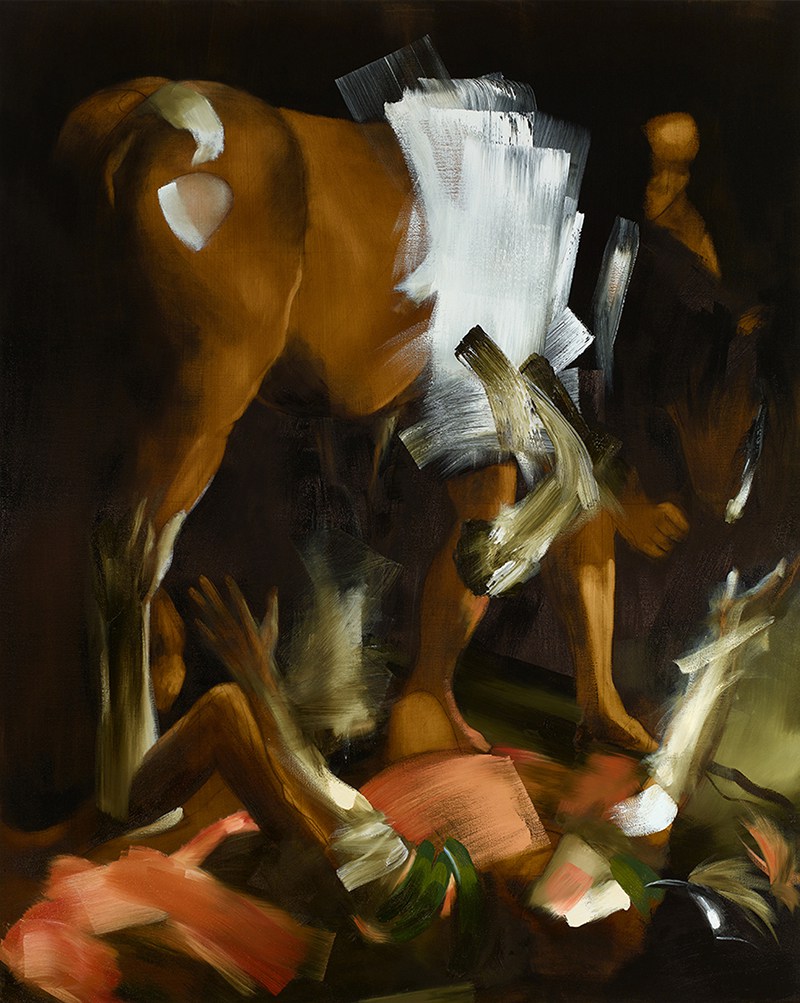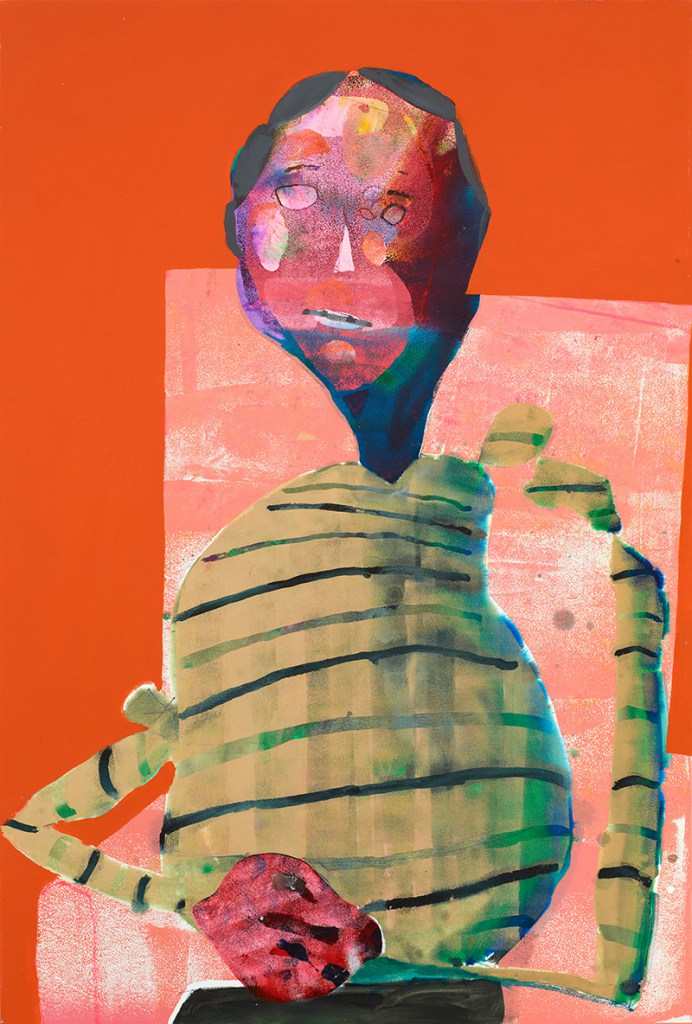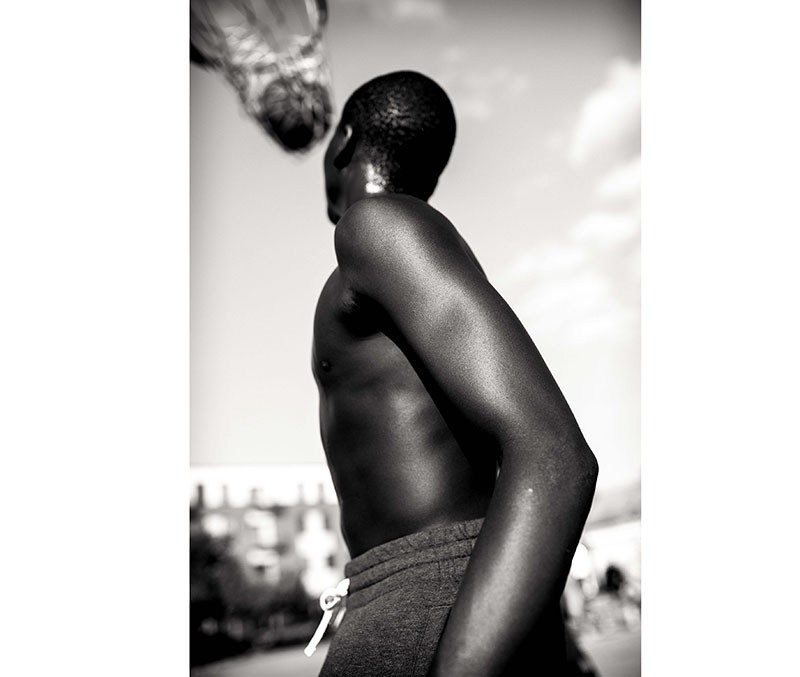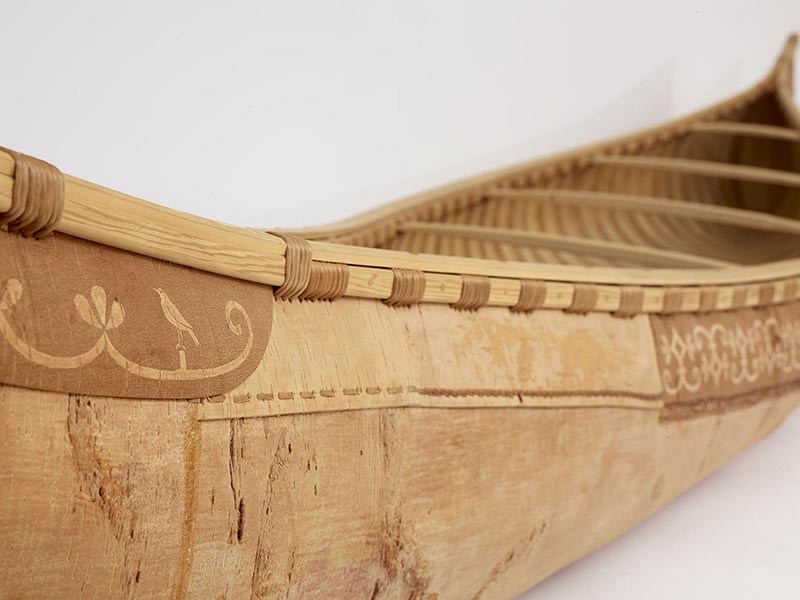PMA’s Biennial Is A ‘collection Of Things Worth Our Attention’
Probably more than any other biennial, the 2018 Portland Museum of Art Biennial that opens Friday reflects our times and the chaos of the world.
Guest curator Nat May accepted the museum’s invitation and challenge to assemble the biennial with the idea that he would have the freedom and ability to choose work by artists who are thinking about a world that is much bigger than Portland and much wider than Maine. He was interested in representing diverse perspectives and putting a spotlight on artists he believes deserve the attention.
As he began his work, May was struck by how different this approach was when he read about some of the distant-past biennials at the museum that involved three-person juries tasked with reviewing thousands of submissions and choosing a few dozen to represent the current state of contemporary art in Maine.
May rejected that approach out of hand. He found that process somewhat arbitrary and cluttered with impossibilities.
“People like to talk about the biennial as a best-of. I don’t believe in superlatives, especially as they apply to art. I am far more interested in seeing a collection of things that are really worth our attention,” said May, the former executive director of Portland’s alternative arts venue Space Gallery. “I feel like the biennial needs to address the times we live in. That’s the topic we’re wrestling with.”
The 2018 biennial opens Friday and is on view through June 3. It includes more than 60 works of art by 25 artists with deep ties to Maine. It highlights their diverse perspectives and interests and is intended to make a statement about the impact and power of art in what May calls “this historical moment that we’re all experiencing together.”





Gina Adams (United States, born 1965), Broken Treaty Quilt Treaty with NY Indians 1838, 2016, hand cut calico letters and cotton thread on antique quilt, 81 x 64 inches. © Gina AdamsPhoto courtesy of the artist. Elise Ansel (United States, born 1961), Damascus, 2017, oil on linen, 75 x 60 inches. Courtesy of the artist and Danese/Corey, New York. Photo by Luc Demers. Stephen Benenson (United States, born 1979), Pink Chair, 2016-17, acrylic and oil on canvas, 80 x 54 inches. © Stephen Benenson. Photo by Luc Demers. Séan Alonzo Harris (United States, born 1968), Kennedy Park Series, Plate #334, 2017 Black and white digital archive print, 35 1/2 x 23 1/2 inches. © Séan Alonzo Harris Photo courtesy of the artist. Birchbark canoe from the Abbe Museum in Bar Harbor. Photo courtesy of the Portland Museum of Art
May quickly realized he couldn’t do it alone. He wanted guidance and advice, and tapped several colleagues who are involved in various aspects of Maine’s contemporary art scenes. Among them was Theresa Secord, an artist and educator, founder of the Maine Indian Basketmakers Alliance and a National Endowment for the Arts National Heritage Fellow. He also sought input from Sarah Workneh, co-director of Skowhegan School of Painting & Sculpture, who sees a lot of work and knows an array of artists associated with Skowhegan, both in Maine and New York. And he tapped the expertise of Mark Bessire, the museum’s director.
Collectively, they found artists whose work stretches beyond the labels of regionalism. These are regional artists in the biennial, May said, but the art in this exhibition shouldn’t be defined as a regional art. In today’s world, borders are permeable, and as Mainers, we’re connected to people from across the country and across continents, he said. The biennial, or any exhibition, does a disservice to those with world views if it limits its scope to the notion of geographic boundaries, he said.
The other thing that’s notable about this biennial is that with one exception – David Driskell – none of the artists have shown at the PMA before. As May talked to people about that, he encountered the assumption that all the artists in the exhibition are young or emerging. That’s not the case. Instead, it means that a lot of accomplished artists haven’t had the chance to show at the PMA until now, he said.
“If nothing else, I am hopeful this show helps link audiences with artists,” he said. “These artists are people who live in our communities, and they are engaging in issues we all care about. Let’s have a conversation. They are ready to talk to us, and they want to talk to us. It’s time to engage.”
Perhaps the artist who best exemplifies that idea is Portland painter, sculptor and illustrator Daniel Minter. He has shown his art across the country, designed stamps for the U.S. Postal Service and illustrated a dozen children’s books. Most of his work revolves around his interest in the African diaspora, as he attempts to connect his life and experiences with those of his ancestors and contemporaries. For the biennial, he is showing paintings, boxes and assemblages from “A Distant Holla’,” an exhibition he hosted last spring at the Abyssinian Meeting House in Portland.
“I think this biennial is not really so much about the individual artists but about the intersection of thought and image that shows how we are connected, to each other and the rest of the world,” Minter said.
The display of Minter’s work in the biennial is striking. His colorful and graphically arresting pieces are framed by hanging quilts by Gina Adams, a Maine College of Art graduate now living in Colorado. Her latest body of work, “Broken Treaties Quilts,” involves sewing text from treaties between the U.S. government and Native American tribes onto antique quilts to talk about the ways American Indians and their communities have been deceived, violated and marginalized by the U.S. government. Sewing the words of injustice, letter by letter, onto objects of comfort and beauty represents the turmoil that Indians have suffered, and reminds viewers of the relationship between those broken treaties and Indian communities today, she said.
Adams’ Ojibwe-Lakota grandfather was boarded at the notorious Carlisle Indian Industrial School in Pennsylvania. As she learned more about his experiences, she became interested in exploring her ancestry through her art. The broken treaties project is the latest of several Indian-focused projects she has pursued in recent years.
For the biennial, she is showing four quilts. One is the Treaty of the Passamaquoddy 1794, which is the governing treaty where the United States gives the Passamaquoddy full water and land rights within the state of Maine. “The treaty is hugely important to the water rights the Passamaquoddy are fighting for now in 2018,” Adams said.
The Treaty of the King 1701 covers the land of all of New York State and parts of Vermont, New Hampshire and Maine. The Treaty of the New York Indians 1838 addresses the Native American Indians of New York State and covers the same land and water rights as the 1701 and the 1794 treaties.
“This treaty is specifically duplicitous in the attempt to rewrite and reroute previous treaties, and in order to understand this legal document one must have an understanding to the maps and the previous legal treaty documents for the region,” Adams said.
The fourth is the Cherokee Treaty 1791, which addresses the Cherokee of Kentucky, Tennessee and North Carolina, as well as the entirety of the Blue Ridge Mountains.
“There’s a wonderful, tactile quality that I am attracted to,” May said of Adams’ quilts. “They are visually overwhelming, and they present history in a tactile way, which is very powerful.”
Adams’ quilts reference the systematic oppression of Native people, and Minter’s installation references America’s history with slaves. Displayed together, they form an arresting commentary on the history of white oppression in America.
“When was the last time you saw something like that in the PMA,” asked Minter.
Until this week, probably never.
2018 PORTLAND MUSEUM OF ART BIENNIAL
WHEN: Opens Friday, on view through June 3
WHERE: Portland Museum of Art, 7 Congress Square
ADMISSION: $15 adults, $13 seniors, $10 students with ID, free 14 and younger; free admission 4 to 8 p.m. Friday
HOURS: 10 a.m. to 6 p.m. Wednesday; 10 a.m. to 8 p.m. Thursday and Friday; 10 a.m. to 6 p.m. Saturday and Sunday
INFO: portlandmuseum.org or 207-775-6148
